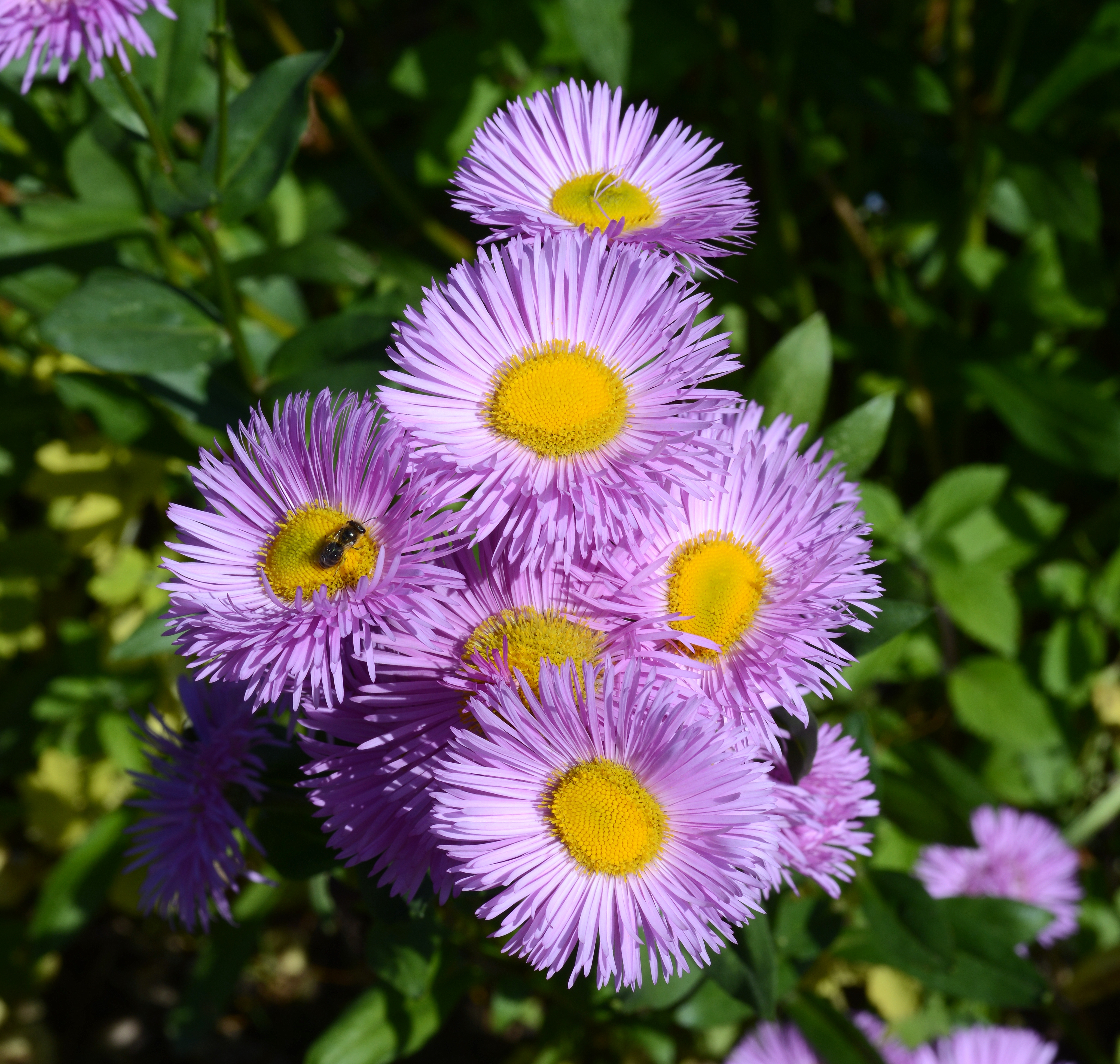
Latin Name: Erigeron speciosus
Common Name(s): Showy Fleabane, Aspen Fleabane
Family: Asteraceae
Size: up to 2 feet tall and wide
Life Cycle: Perennial
Distribution: Western North America in a variety of habitats
Light Requirements: Full sun to partial shade
USDA Zone: 2a to 9b
Drought Tolerance: Fairly high. Thrives on minimal irrigation even when first planted and can survive extended drought once established.
Fire Risk: Presumably low, given the fleshy evergreen leaves. Seems to often regrow from the roots after fires, often blooming the next summer.
Cultivation Notes
Showy fleabane is one of the most beautiful and versatile Oregon native flowers. It grows in a wide variety of soils, from moist loam to clay hardpan, and takes exceptionally well to the garden. It is a good plant for droughty areas, pollinator gardens, and meadows.
Ecology
The attractive flowers bloom throughout the summer and are attractive to pollinators. The seeds are consumed by birds in the winter, when few food sources are available.
Uses
Various Erigeron species have been consumed as a potherb and distilled for their essential oil, which was used as a flavoring. There are few records as to the edibility of this species, however, and certain species are known to cause contact dermatitis and illness so it is not recommended to eat this species. Various cultures have used fleabane as medicine and insect deterrent, the usefulness of which have not been verified.
Propagation
Division, basal stem cuttings, or seed. Seeds are easily collected and can be sown directly in the fall. Simply press lightly on the soil surface and wait. Germination can be slow and often is irregular. If planting in the late spring, cold stratification will likely be needed for up to two months before germination will take place.